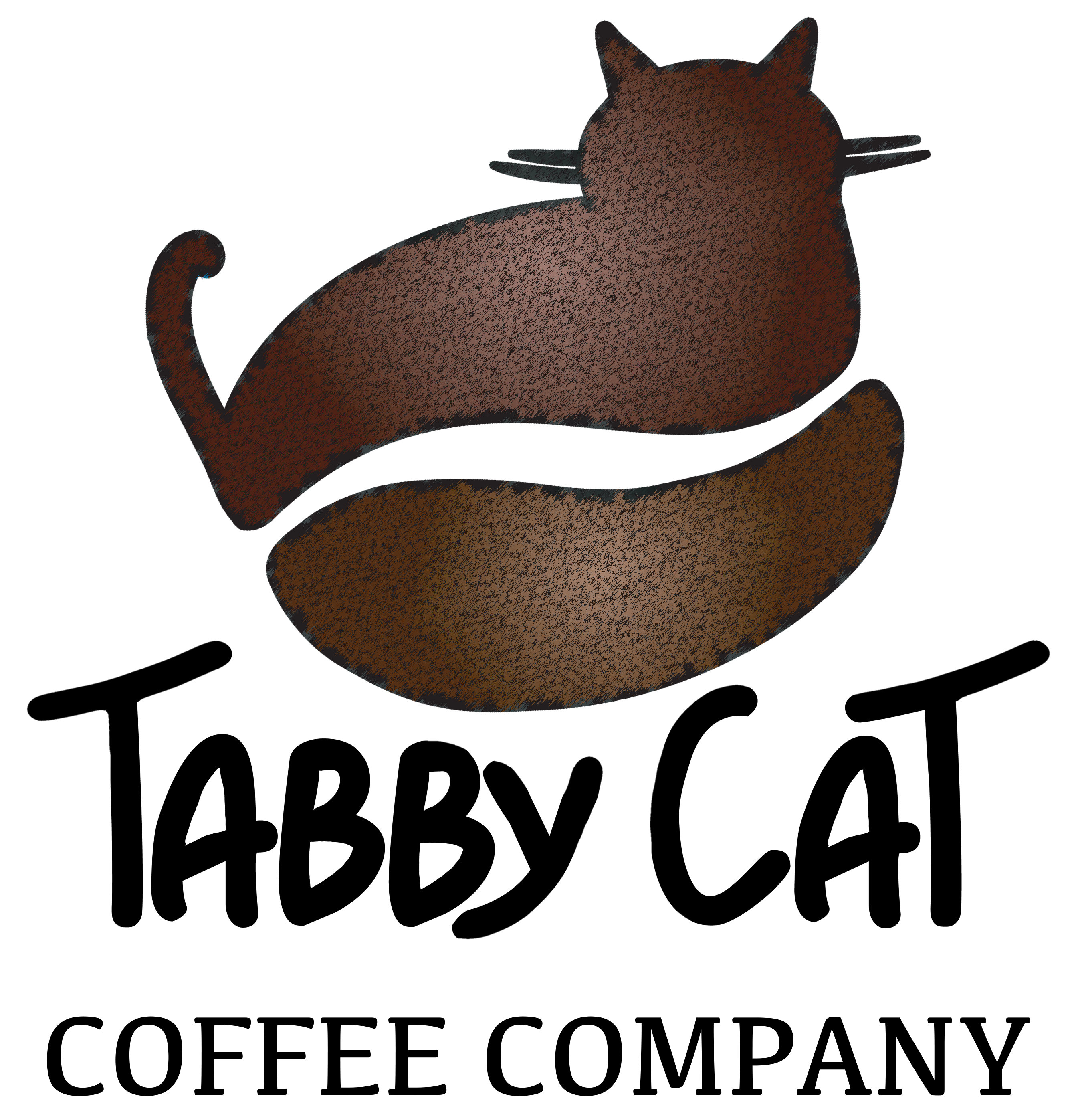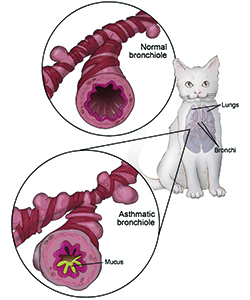Asthma is a disease of the lower airways of the lungs that affects between 1 and 5% of cats.
Although there is some debate about the definition, most clinicians and researchers agree that feline asthma is caused by an allergic reaction to inhaled allergens, particles that stimulate a cat’s immune system.
When a susceptible cat first inhales an allergen, her system creates specific antibodies to target that antigen. When the cat is exposed to that antigen again, these antibodies recognize the allergen and start a cascade of events that bring many different types of immune cells to the airways. These immune cells then trigger the production of substances that promote inflammation, a condition that results in irritation, swelling, and reactive constriction of the airways. As a result, the diameter of the airways may decrease and mucus may accumulate within the passages (Figure 1). All these processes limit the ability of air to move through the airways and cause the cat to experience difficulty breathing.
The average age of cats diagnosed with asthma is between 4 and 5 years. It doesn’t appear that one sex is more susceptible to asthma, and although some studies suggest that Siamese cats may be predisposed to asthma, this has not been definitively proven.
Clinical Signs
Cats suffering from asthma may show signs of difficulty breathing, wheezing, rapid breathing, coughing or hacking, open-mouthed breathing, or vomiting. These signs can vary in intensity, ranging from acute respiratory crises to chronic, low-grade coughing, elevated respiratory rate, or increased respiratory effort. These signs may happen spontaneously or they may be elicited by pressing lightly on the cat’s throat area. During an asthma attack, many cats hunch their body close to the ground and extend their necks forward in a characteristic posture (Figure 2).








